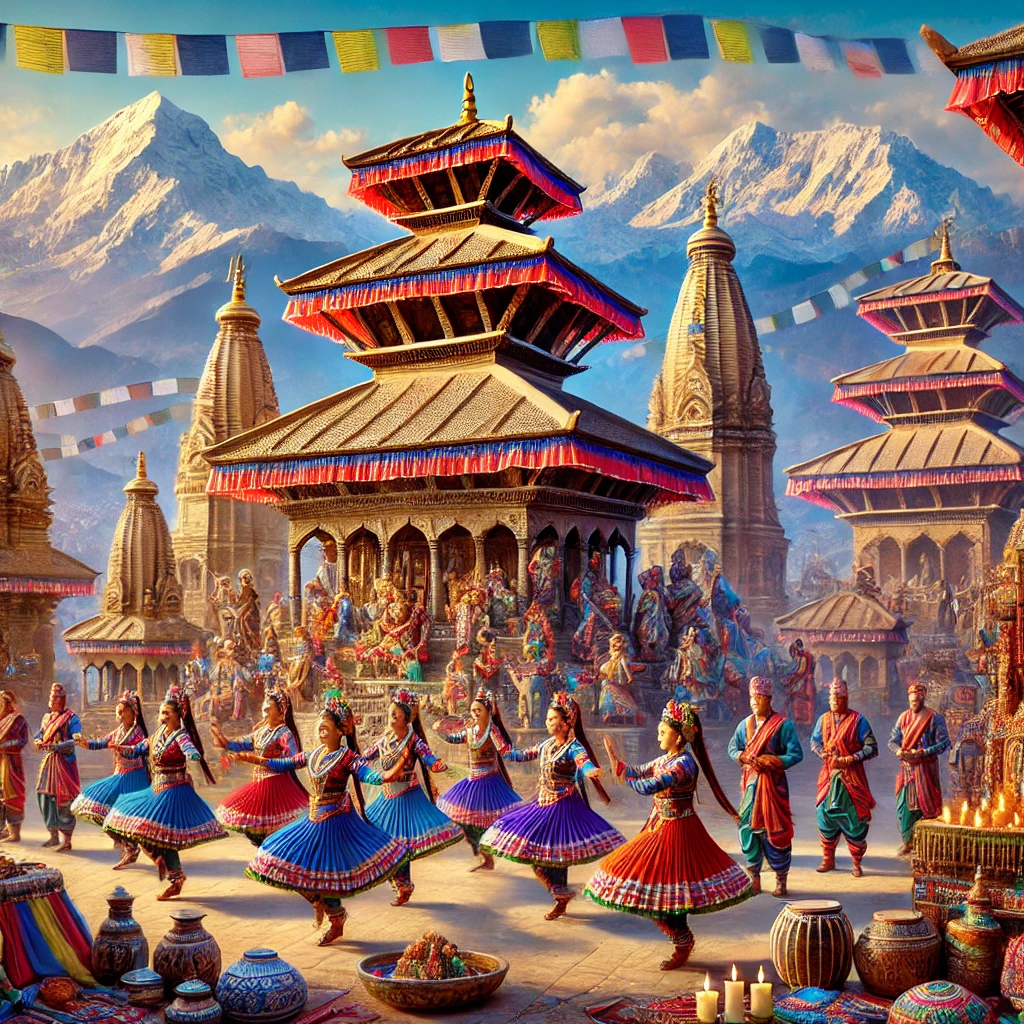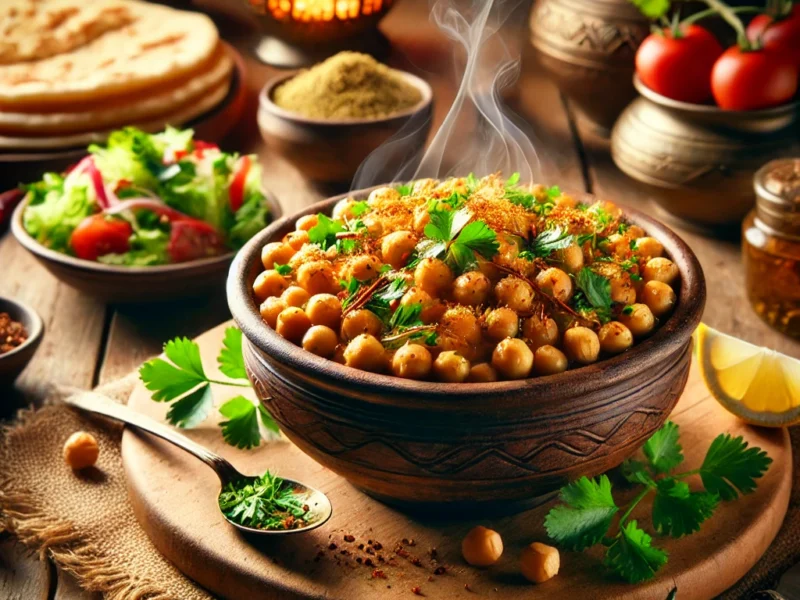Nepal, a landlocked country nestled between the majestic Himalayas and India, is a cultural treasure trove. It is not just known for its breathtaking landscapes and adventure tourism but also for its rich, diverse cultural traditions. This blog post will take you on a journey through the essence of Nepali culture and traditions, giving you a deeper understanding of what makes this country so unique.
The Cultural Diversity of Nepal:
Nepal is home to over 125 ethnic groups and more than 123 languages, creating a vibrant cultural mosaic. The country’s culture is influenced by its Hindu and Buddhist roots, as well as its indigenous practices. This diverse heritage is expressed through the various festivals, rituals, dances, music, and art forms that are celebrated throughout the year.
While exploring the rich Ancient Artz of Nepal, you can witness how traditional craftsmanship is passed down through generations. From intricate woodcarvings to stone sculptures and paintings, these art forms play a significant role in preserving the essence of Nepal’s ancient traditions.
Major Festivals in Nepal:
Festivals are an integral part of Nepali life and reflect the country’s religious and cultural diversity. Some of the most prominent festivals include:
-
Dashain:
The longest and most important Hindu festival, celebrated for 15 days, honoring the victory of good over evil.
-
Tihar:
Known as the festival of lights, this five-day celebration honors animals such as crows, dogs, and cows.
-
Buddha Jayanti:
Celebrating the birth of Lord Buddha, this festival is especially significant in the Lumbini region, where Buddha was born.
-
Holi:
The festival of colors, Holi, is celebrated with much enthusiasm across Nepal, symbolizing the arrival of spring.
These festivals provide a glimpse into the cultural richness and religious harmony of the country.
Nepali Traditions and Rituals:
Nepalese traditions are often linked to religious beliefs, with Hinduism and Buddhism being the dominant religions. One of the unique traditions is the worship of Kumari, a living goddess. Young girls are selected and worshiped as the embodiment of divine feminine energy until they reach puberty, after which a new Kumari is chosen.
Marriage ceremonies in Nepal are elaborate affairs, often lasting for several days. Rituals vary by ethnic group, but most involve both families and a series of religious ceremonies aimed at ensuring a prosperous union.
The South Shore Cultural Center offers a fascinating comparison with its own cultural ceremonies, though Nepalese traditions remain deeply rooted in religious customs, making each ritual unique to the region.
Traditional Clothing in Nepal:
Nepali traditional attire reflects the country’s diverse ethnic makeup. The Daura Suruwal is the national dress for men, consisting of a long shirt and trousers. For women, the Gunyo Cholo is worn, especially among the indigenous communities. In urban areas, however, modern clothing is more prevalent, but traditional attire is still worn during festivals and special occasions.
Ethnic groups like the Sherpas in the mountainous regions wear Bakkhu, which is a long robe, while women of the Newar community don Haku Patasi, a traditional sari with a distinct red border. This colorful blend of traditional outfits adds to the cultural vibrancy of Nepal.
Nepalese Art and Music:
Art in Nepal ranges from ancient Buddhist paintings known as Thangka to intricate wood carvings found in temples and palaces. These art forms have religious significance and are an expression of devotion.
Nepalese music and dance are also vital to the country’s cultural fabric. Classical music, especially influenced by the ragas, plays a significant role in religious and ceremonial events. Folk music is more prevalent in rural areas, with traditional instruments like the madal (drum) and sarangi (string instrument) being commonly used.
Music and art from the Ancient Artz in Nepal are not just for aesthetic appreciation but are woven into the cultural and spiritual life of the country.
Food Culture in Nepal:
Nepali cuisine is simple yet flavorful, deeply influenced by Indian and Tibetan flavors. The national dish, Dal Bhat, is a staple that consists of lentil soup served with rice and curried vegetables. Momos, a type of dumpling, are also very popular, especially in the mountainous regions.
Festivals bring their own special dishes. For instance, Sel Roti, a sweet rice doughnut, is a must-have during Tihar. Dhido, a traditional buckwheat or millet-based meal, is often served in rural areas and is considered a wholesome, nutritious dish.
The Importance of Religion in Nepal:
Religion is interwoven with daily life in Nepal. The majority of the population practices Hinduism, followed closely by Buddhism. Religious tolerance and harmony are key aspects of Nepalese society, and it is common to find Hindu and Buddhist shrines coexisting.
Lumbini, the birthplace of Lord Buddha, is a sacred site for Buddhists around the world, attracting pilgrims and tourists alike. Pashupatinath, a famous Hindu temple, is a significant pilgrimage site for Hindus.
The peaceful coexistence of multiple religions showcases the cultural richness of Nepal and offers a striking comparison with how different traditions are embraced at places like the South Shore Cultural Center in the United States.
FAQs:
Q: What is the main religion practiced in Nepal?
A: Hinduism is the predominant religion, followed by Buddhism. However, Nepal is home to a variety of religious practices due to its diverse population.
Q: What is the significance of the Kumari tradition in Nepal?
A: The Kumari tradition involves the worship of a young girl as the living embodiment of a goddess. This ancient tradition is unique to Nepal and continues to be practiced today.
Q: What are the most important festivals in Nepal?
A: The most important festivals include Dashain, Tihar, Buddha Jayanti, and Holi, each reflecting the religious and cultural diversity of Nepal.
Q: How do Nepali people celebrate weddings?
A: Weddings in Nepal are elaborate events with multiple religious rituals that vary by ethnic group. Family involvement is significant, and celebrations can last for several days.
Q: What are some traditional Nepali dishes?
A: The national dish of Nepal is Dal Bhat, a simple yet flavorful meal of lentils and rice. Other popular dishes include Momos (dumplings) and Sel Roti (sweet rice doughnuts).
Conclusion:
Nepal’s culture and traditions are a beautiful tapestry woven with threads of religion, history, and ethnic diversity. From the grand celebrations of festivals like Dashain and Tihar to the intricate art forms preserved for generations, Nepal offers a rich and varied cultural experience. The country’s deep-rooted traditions, harmonious religious coexistence, and vibrant customs make it a unique destination for anyone seeking to explore a culture that values both its ancient heritage and modern influences. Whether you are captivated by the spiritual significance of its rituals or the artistry seen in its traditional crafts, Nepal’s cultural landscape leaves an indelible mark on all who visit or study it.



